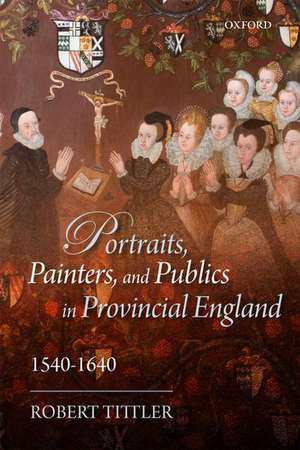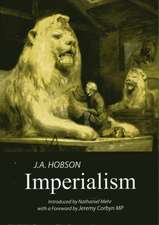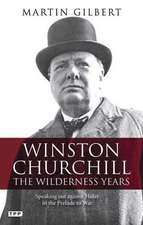Portraits, Painters, and Publics in Provincial England, 1540--1640
Autor Robert Tittleren Limba Engleză Hardback – 5 ian 2012
Preț: 744.58 lei
Preț vechi: 1070.55 lei
-30% Nou
Puncte Express: 1117
Preț estimativ în valută:
142.49€ • 154.73$ • 119.69£
142.49€ • 154.73$ • 119.69£
Carte tipărită la comandă
Livrare economică 11-17 aprilie
Preluare comenzi: 021 569.72.76
Specificații
ISBN-13: 9780199585601
ISBN-10: 0199585601
Pagini: 216
Ilustrații: 26 black and white images
Dimensiuni: 164 x 241 x 17 mm
Greutate: 0.52 kg
Editura: OUP OXFORD
Colecția OUP Oxford
Locul publicării:Oxford, United Kingdom
ISBN-10: 0199585601
Pagini: 216
Ilustrații: 26 black and white images
Dimensiuni: 164 x 241 x 17 mm
Greutate: 0.52 kg
Editura: OUP OXFORD
Colecția OUP Oxford
Locul publicării:Oxford, United Kingdom
Recenzii
It is to be hoped that this study will be read by art historians of all stripes and that it will help to spark off discussions between the representatives of different regional variants of the Renaissance.
the stories embodied in the portraits examined ... are extraordinary. This is an excellent book.
The importance of Robert Tittlers new book for anyone interested in British art or the history of the Tudor and early Stuart periods cannot be overstated; indeed it is astonishing that this is the first fully rounded account of the portraiture produced outside aristocratic circles in early modern England. Building on his previous study of civic portraits (The Face of the City, 2007), Tittler applies the approach and skills of an economic and social historian to provide a revisionist, objective and compelling assessment of the factors influencing the emergence of a characteristic English School of portraiture between the age of Holbein and about 1640.
Tittler's book is original not only in its admirable willingness to explore the lesser-known, often nameless, artists of less-populated regions, but also in its thorough contextualization of the growing market for portraiture among the middling class.
This book makes a compelling case for the significance of vernacular portraiture to our understanding of the social and cultural history of early modern England ... a richly rewarding read.
Tittler provides in this important monograph a valuable window into the production of painted portraits by a category of artist until now little-studied within the history of English art.
the stories embodied in the portraits examined ... are extraordinary. This is an excellent book.
The importance of Robert Tittlers new book for anyone interested in British art or the history of the Tudor and early Stuart periods cannot be overstated; indeed it is astonishing that this is the first fully rounded account of the portraiture produced outside aristocratic circles in early modern England. Building on his previous study of civic portraits (The Face of the City, 2007), Tittler applies the approach and skills of an economic and social historian to provide a revisionist, objective and compelling assessment of the factors influencing the emergence of a characteristic English School of portraiture between the age of Holbein and about 1640.
Tittler's book is original not only in its admirable willingness to explore the lesser-known, often nameless, artists of less-populated regions, but also in its thorough contextualization of the growing market for portraiture among the middling class.
This book makes a compelling case for the significance of vernacular portraiture to our understanding of the social and cultural history of early modern England ... a richly rewarding read.
Tittler provides in this important monograph a valuable window into the production of painted portraits by a category of artist until now little-studied within the history of English art.
Notă biografică
Robert Tittler has researched, taught, and published for over forty years, producing ten books and some fifty scholarly articles and essays on the urban, political, social, economic, and cultural history of the Tudor and early Stuart eras. He prefers to work at the edges of his subjects rather in their centres, hoping to knit those subjects together with the edges of adjacent issues. His studies of town halls and political authority (Architecture and Power, 1991), of the impact of the Reformation on urban political life (The Reformation and the Towns, 1998), the experiences of individual urban residents in relation to the whole (Townspeople and Nation, 2001), or of portraiture and civic identity (The Face of the City, 2007), all work towards those ends, as does this present book.















